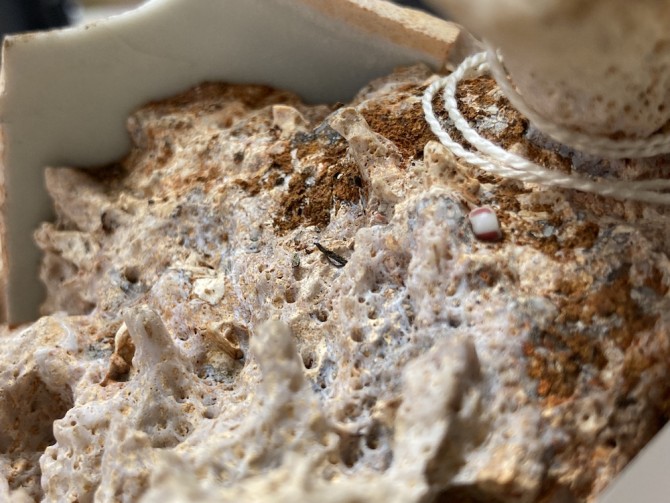In 1788, two ships disappeared in the South Pacific. When they went down, the Boussole and the Astrolabe had been on an expedition commissioned by King Louis XVI, led by French explorer Jean-François de Galup, comte de La Pérouse.. Their loss became one of the most widely publicized disasters in French maritime history.
Ferrous agglomeration with porcelain shards and a French trading bead, 1788-2003. Musée Maritime de Nouvelle-Calédonie, Nouméa, LAP.030.52
More than two centuries later, contemporary explorers used cutting-edge archeology technology to collect nearly 5,000 objects from the wreckage during eight expeditions between 1996 and 2008. Many of the recovered objects had become agglomerations, accumulating oceanic sedimentation and transforming into new configurations of nature and culture, past and present. Still other artifacts - from on board and elsewhere - tell even more of the story.
When pieced together, especially through objects, "the venture is a testament to the ability of humans to recover what has been lost," art historian Kelly Presutti writes in "Foul Histories and Forgotten Objects: French Entanglement in the South Pacific," published in the September 2025 issue of The Art Bulletin. The venture also reveals an extractive tendency within imperial history, she said.
Read the fully story on the College of Arts and Sciences website.







